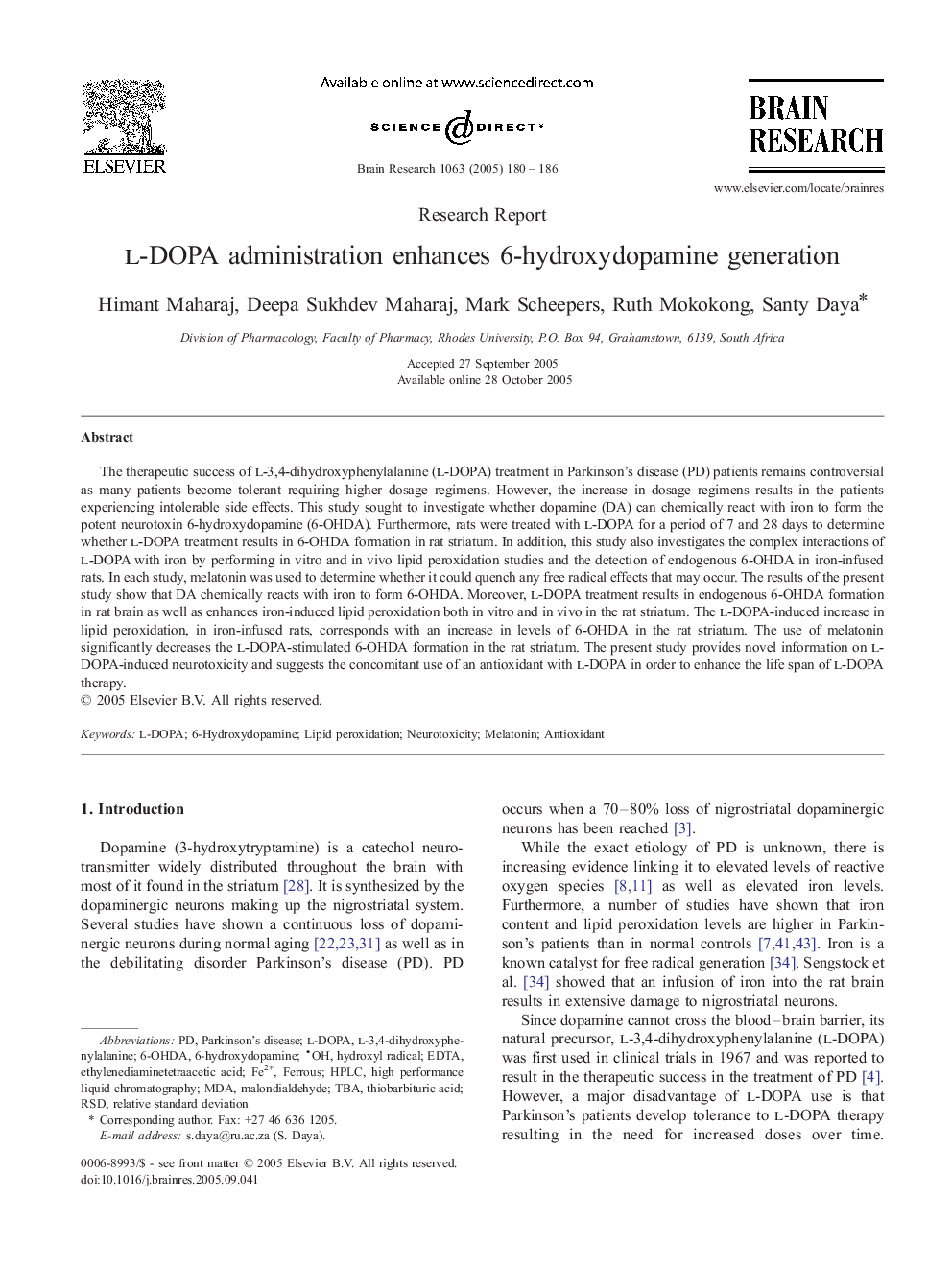| Article ID | Journal | Published Year | Pages | File Type |
|---|---|---|---|---|
| 9415791 | Brain Research | 2005 | 7 Pages |
Abstract
The therapeutic success of l-3,4-dihydroxyphenylalanine (l-DOPA) treatment in Parkinson's disease (PD) patients remains controversial as many patients become tolerant requiring higher dosage regimens. However, the increase in dosage regimens results in the patients experiencing intolerable side effects. This study sought to investigate whether dopamine (DA) can chemically react with iron to form the potent neurotoxin 6-hydroxydopamine (6-OHDA). Furthermore, rats were treated with l-DOPA for a period of 7 and 28 days to determine whether l-DOPA treatment results in 6-OHDA formation in rat striatum. In addition, this study also investigates the complex interactions of l-DOPA with iron by performing in vitro and in vivo lipid peroxidation studies and the detection of endogenous 6-OHDA in iron-infused rats. In each study, melatonin was used to determine whether it could quench any free radical effects that may occur. The results of the present study show that DA chemically reacts with iron to form 6-OHDA. Moreover, l-DOPA treatment results in endogenous 6-OHDA formation in rat brain as well as enhances iron-induced lipid peroxidation both in vitro and in vivo in the rat striatum. The l-DOPA-induced increase in lipid peroxidation, in iron-infused rats, corresponds with an increase in levels of 6-OHDA in the rat striatum. The use of melatonin significantly decreases the l-DOPA-stimulated 6-OHDA formation in the rat striatum. The present study provides novel information on l-DOPA-induced neurotoxicity and suggests the concomitant use of an antioxidant with l-DOPA in order to enhance the life span of l-DOPA therapy.
Keywords
(6-OHDA)6-Hydroxydopamine(PD)(HPLC)(EDTA)(MDA)l-3,4-dihydroxyphenylalaninel-DOPAAntioxidantFerrousEthylenediaminetetraacetic acidThiobarbituric acidrelative standard deviationParkinson's diseaseHydroxyl radicalNeurotoxicitymalondialdehydeMelatoninLipid peroxidationhigh performance liquid chromatography
Related Topics
Life Sciences
Neuroscience
Neuroscience (General)
Authors
Himant Maharaj, Deepa Sukhdev Maharaj, Mark Scheepers, Ruth Mokokong, Santy Daya,
